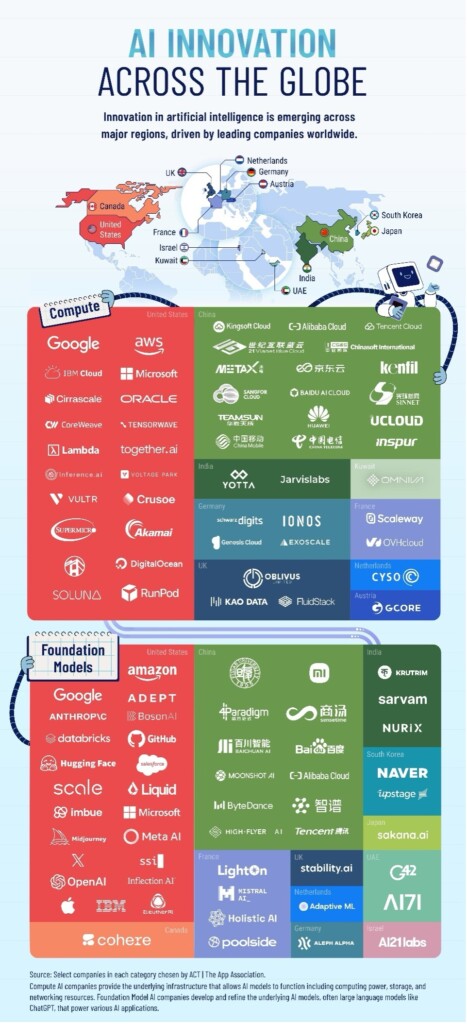In October 2024, competition authorities from the G7 countries convened in Rome to discuss the artificial intelligence (AI) industry. Their message to AI innovators was clear: expect coordinated and vigorous scrutiny. The recent unveiling of DeepSeek’s open-source R1 AI model, notably released under an MIT open-source licensing model, has called into question this regulatory mindset. Competing on an equal footing with top-tier AI systems from OpenAI, Google, Anthropic, and others at a fraction of the cost, this development underscores just how unpredictable and fiercely competitive the AI landscape is. This is illustrated by the graphic below, showing just how robust the global competition is.

The AI race is no longer a slow crawl of academics making theoretical breakthroughs. It is now a full sprint by industry. Policymakers, particularly in the West, must grasp the fundamental truth that competition is global and robust in the AI ecosystem. The moment demands forward-thinking policies that nurture, rather than stifle, innovation.
In the geopolitical battlefield for tech dominance AI is viewed (whether rightly or not) as a formidable instrument in the arsenal of governments.
AI is shaping up to be an arena where nations compete for technological dominance. For example, it is a pillar of China’s national strategy. In its 2017 “New Generation Artificial Intelligence Development Plan,” China laid out an aggressive blueprint to dominate AI, positioning the technology as the engine of industrial transformation. Not to be outpaced, the United States has ramped up its own efforts. A recent Executive Order signed by President Trump explicitly reinforces AI leadership as a national priority, emphasizing its vital role in security, economic strength, and human progress.
However, in recent times, competition authorities, notably in the West, have put harnessing AI’s potential on the back burner in favor of parochial concerns about concentration in markets involving AI services. For example, in July 2024, Western competition watchdogs issued a joint warning about AI potentially entrenching monopolistic power. If recent news has shown anything, it is that this fear does not align with reality. The emergence of players like DeepSeek demonstrates that the ecosystem is expanding, not contracting. Notably, the most groundbreaking generative AI models haven’t come from entrenched incumbents with deep data silos. Instead, they have emerged from nimble innovators disrupting the status quo. Yet regulators are on the path to apply outdated assumptions, treating AI as if it were destined to consolidate under a few monopolies. These fears, likely an after-effect from past battles against “Big Tech,” fail to acknowledge AI’s dynamic and unpredictable evolution. If anything, heavy-handed intervention at this stage could stifle progress, deterring new entrants and making AI development riskier and costlier. Premature regulation could inadvertently cement the dominance of current leaders, who will be the only ones capable of bearing the mounting compliance costs, rather than leveling the playing field for emerging innovators.
Rigid, blanket regulations stifle innovation. Policymakers must ensure that they only intervene when the costs of doing so are outweighed by the benefits. Even competition law investigations can cast a long shadow, as we have seen with the Federal Trade Commission’s attempt at forecasting market concentration in its 6(b) study. This kind of heavy-handed approach to AI trades dynamic market forces for government planning, leaving consumers and competition worse off.
AI governance isn’t about shutting down perceived monopolies. It is about fostering an environment for technological breakthroughs to benefit society. Competition authorities must resist the impulse to regulate AI into stagnation. The global AI contest is happening now, and only governments that foster a climate of innovation will drive the future of this influential technology.